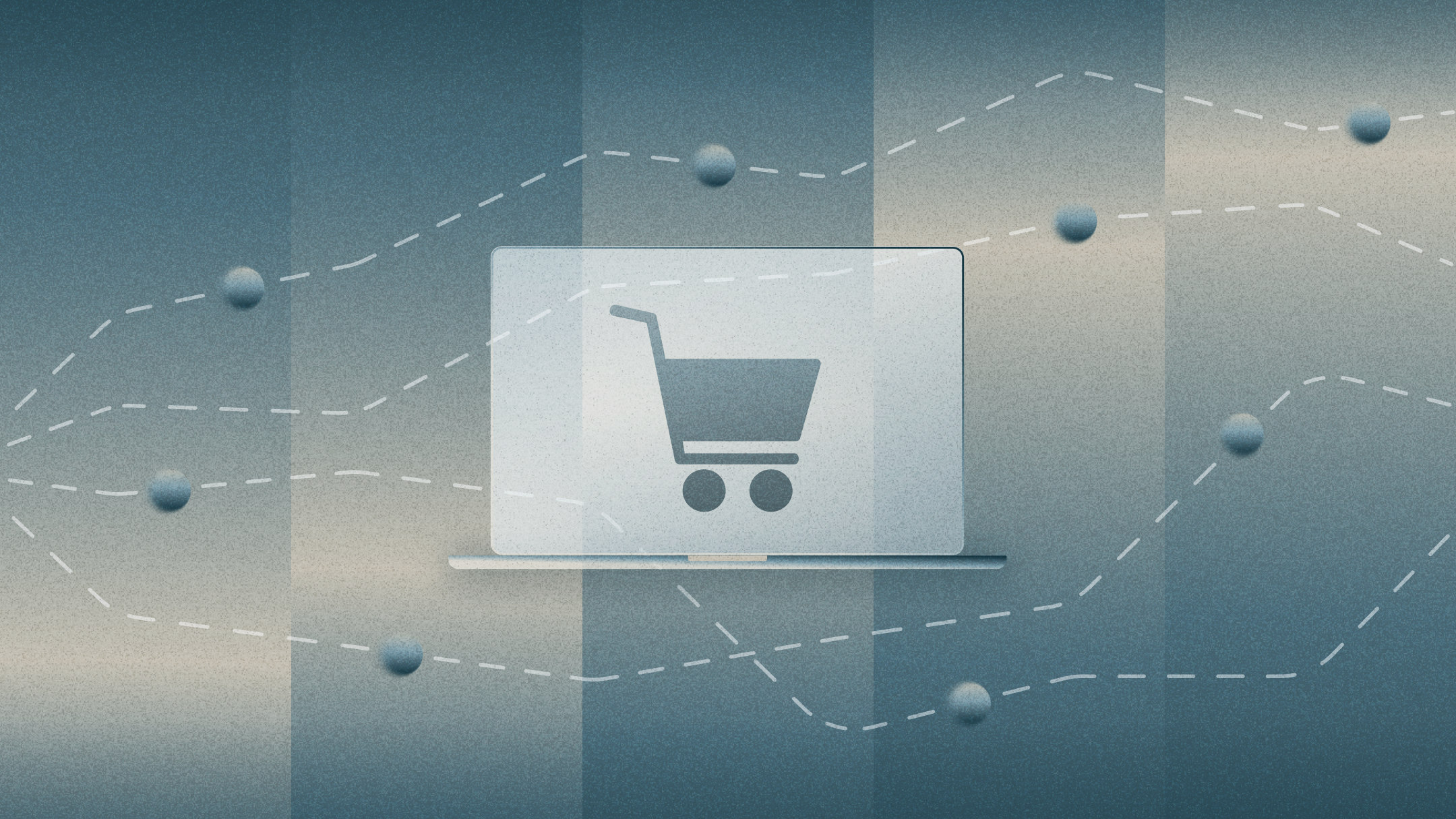Building economic resilience for your ecommerce business

Former product manager turned content marketer and journalist.
The U.S. has faced an economic roller coaster over the past few years — a global pandemic, inflation, the threat of recession, and ever-changing trade policies.
Some businesses have faced economic headwinds before:. The 2008 financial crisis, for example, saw high unemployment, an international trade slowdown, and enormous pressure on small businesses. Companies that weathered that storm may be able to lean on some of those past experiences as they face uncertainties.
But for many companies, this might be their first rodeo — and the current challenges are certainly new for most ecommerce companies. Online shopping — and, truly, the global supply chain — were nothing in 2008 compared to today. Many ecommerce leaders feel like they’re operating without a playbook.
So we thought we’d put the foundations for one together. We asked several ecommerce leaders how they’re navigating current challenges — and we’ve compiled their responses and advice here as a resource.
The Experts:
- Christian Casebeer, Chief Operating Officer at Asset
- Aurora Diaz, Founder at The Jefas
- Shad Doverspike, Co-founder at Strolee Brands
- Muhammad Joyo, Co-founder of elaichi co.
- Claudio Storelli, Founder and Executive Chairman at Storelli Sports
Planning without predictability
Shifting market conditions have long been part of running any kind of retail business, and ecommerce is no different. Consumers are sensitive to everything, from shipping speed to emerging competitors to brand ethics. Brands have to adjust to what the market dictates.
Asset’s Christian Casebeer acknowledges that unpredictability is always part of running an ecommerce business. “As a CPG brand, we don’t have the luxury of ever planning for stability,” he says. “It’s hard to predict consumer taste or future economic conditions.”
While rising inflation and unemployment may have influenced how people spend their money, the volatile U.S. trade policy was more unexpected.
“We anticipated tariff increases, but expected gradual implementation,” says Claudio Storelli of Storelli Sports. “Reality moved faster than we anticipated.” His company had planned a significant growth investment to triple sales within 36 months, but had to rethink its strategy.
Muhammad Joyo shares that Elaichi sources products from India, and packaging from China. “Every morning we’re like, ‘All right, what’s changed?’” he says. The company tries not to rely on one supplier or even one social media platform.
To that end, the on-again, off-again TikTok ban has also threatened ecommerce businesses, so Elaichi focuses on both TikTok and Instagram. That helps them ensure that “if one platform disappears, our business doesn’t come crashing down with it.”
Beyond product disruptions and changing consumer behavior, company leaders also have to think about the impact on their employees. “There’s a whole team relying on you,” Joyo says. “If you can’t deliver for them because you’re too tired or you can’t get important things done because you’re constantly just ‘going’ there are big impacts.”
Founder takeaways
- Expect the unexpected: market conditions can change on a dime, so it can be effective to have short- to medium-term plans — with long-term strategy remaining flexible.
- Diversify wherever you can, from suppliers to marketing platforms.
- Keep your team in mind — it’s important to show steady leadership especially through challenging times.
Navigating costs and pricing
Over the first few half of 2025, tariffs have been a headwind for many ecommerce companies. With tariffs ranging from an additional 10% to a whopping 145%, products from overseas suppliers are caught in the crosshairs, with tariffs they’re subject to based on when they arrive in the U.S.
Since trade policy has been changing daily, in some cases, ecommerce leaders are grappling with how much to order and when to place orders.
For The Jefas, everything is more difficult now in terms of sourcing and acquiring product materials. “We have to be strategic in terms of how much we’re purchasing,” says Aurora Diaz. “Of course, it's cheaper to purchase in bulk, but sometimes you don’t have the money. In the moment, we have to think about that and sometimes put [purchasing] on the back burner and think about it later on.”
Storelli Sports opted to ship partial quantities to avoid immediate upfront tariff payments, even if it meant incurring higher airfreight expenses later. “Additionally, we aggressively reduced operational costs, renegotiated payment terms with suppliers, and accelerated international market expansion to diversify our sales dependency beyond the U.S.,” says Storelli.
Elaichi is at a growth stage and recently launched its ecommerce line. “Right now, we’re not caring much about cost. We’re prioritizing quality and flexibility,” says Joyo. “We’re in a phase where sales are doubling every month, so we don’t really know how much we’ll need. It’s hard to project that far into the future, so we’re optimizing for something a little bit different.” For Elaichi, it doesn’t make sense to get the cheapest inventory since it can always dial in that margin as the company expands.
Strolee’s Shad Doverspike shares that his company has restructured its orders and product line, focusing on “hero products.” “We had to be really decisive on what we wanted to keep,” he says. “A lot of our supporting products and even new product development have been put on hold.” Without knowing how long tariff uncertainty will last, Doverspike acknowledges that some products don’t have enough price elasticity to absorb the tariff or raise the price.
Other companies, like Storelli Sports, have to raise prices to offset tariff costs. “It sucks to think that customers will have to pay the brunt of tariffs, but it’s also impossible for brands to absorb such extra costs and be sustainable,” says Storelli. The company is partially passing increased tariff costs to customers, though it also intends to absorb a substantial portion to prevent severely dampening demand.
Casebeer believes that merchants and consumers will figure out how to adapt. “If external economic factors put us in a tight spot, we’ll figure it out,” he says. “At the end of the day, we listen to our customers, and we’re proactive about meeting their needs.”
Founder takeaways
- Be honest with yourself about the phase your company is in — if demand is through the roof, it may be best to feed that and more actively manage costs at a later time. But if growth is more modest, it may be prudent to weigh volume purchases against capital reserves or partial quantities to alleviate the impact of tariffs.
- Prioritize your hero products. Not every line item needs to bring revenue in equally, so consider the customer experience and impact of raising prices on your flagship products.
Shoring up financial resources
Many of the ecommerce leaders we spoke with have considered additional capital or financing. Tariffs have drained companies of cash and forced them to consider what would happen if conditions worsen.
Storelli Sports secured multiple capital sources to ensure liquidity, in addition to making immediate adjustments like absorbing costs, raising prices, and shifting suppliers.
The Jefas has also thought about additional capital, though Diaz points out that, “It’s really difficult for women and underrepresented founders to raise money.” The company has explored taking out a loan.
Elaichi has also considered different financing options to support the business. “Capital is one of the biggest restraints,” says Joyo. “So far, we’ve been bootstrapped. As we continue to grow, we’re going to need capital. I think about that a lot.”
While access to funding is certainly on many ecommerce leaders’ minds, they also have to consider their day-to-day operations. Preserving existing resources, or even taking fewer risks, can provide more financial stability during economic uncertainty.
Asset is taking a more careful and thoughtful approach to expansion into new sales/marketing channels and introducing new products. “We’re less willing to sacrifice profit and loss health for aggressive growth metrics,” says Casebeer. “We will continue to grow, but there is a limit to the cost.”
Founder takeaways
- There’s no way around this — harsh capital and liquidity environments add stress to a business. Difficult choices may need to be made around operating costs and the line items that are truly indispensable to your company.
- If possible, diversify your capital sources. This, of course, is easier said than done — and so it may be effective to secure those in stronger market cycles in preparation for downturns.
Mercury offers working capital loans* to fund your business needs. Visit this page to see if you qualify.
Shifting business strategy
When the ground keeps shifting, so must the strategy — though the specific shifts in strategy are as unique as each business. Ecommerce leaders may have to rethink how they plan, make decisions, and position themselves, even if it’s for the short term.
“Each business has a different path forward,” says Doverspike. “It’s tough to think that this is going to stay around forever. Maybe six months from now, I’ll have a different outlook.” Strolee has worked with its manufacturer and prepared for a seasonal sales boost, which is typical in the summer months. “We have a couple of creative ways to be better prepared when this is resolved, or just have a path through it,” Doverspike adds.
Storelli compared Storelli Sports’ challenges to COVID-era adjustments. For many ecommerce companies, a similar strategy might work: safeguarding survival and liquidity. Storelli Sports also models various scenarios, incorporating uncertainty into its strategies to maintain operational flexibility. “We’re focused on emerging stronger, leaner, and more diversified once market conditions stabilize or alternative supply chains are solidified,” says Storelli.
Joyo has become more outcomes-focused. With price fluctuations, it’s hard to know whether or not to take a risk. Instead of considering the decision based on price, he evaluates it based on the outcome. “I compare two outcomes, and if one of the outcomes I cannot survive, it makes the decision a lot easier.”
Over the long term, Asset’s strategy includes intentional decision points so it can be “agile, proactive, or reactive to multiple versions of the future,” according to Casebeer. As ecommerce companies emerge from current conditions and begin to plan for the future, a multiversioned approach can let them quickly adapt when conditions change.
Economic uncertainty will inevitably happen again, and companies can benefit from multiple plans, each still ultimately focused on the company’s North Star.
Founder takeaway
- Prepare for multiple scenarios. Read more on this from our CFO, Dan Kang.
Relying on customers and resilience
Nimble. Adaptable. Ready to pivot. All qualities ecommerce companies need, especially during economic uncertainty.
“Resiliency is the name of the game as a startup founder,” Diaz points out. “We have to figure it out. At the end of the day, we have to make sure that we’re providing a good product to our customers.”
While it may feel like decisions have an unpredictable outcome, companies don’t have to struggle in a vacuum. The Jefas leans into support from its customers. “When we tell the customer how much they’re impacting not only our platform, but our brand partners, they’re more willing to support us.”
Casebeer also recommends that ecommerce brands rely on the communities they’ve built with customers to sustain the business through difficult times. “When you don’t have the time and money to do all the research and experiments, let your customers guide you,” he says. “Customers’ problems and questions will inform the strongest operations.”
Economic resilience comes not only from making smart decisions and planning, but also from building a brand customers love. Tell your company’s story, tell your customers what you’re facing, and let them sustain your business with their continued support.
Want more ecommerce insights? Watch our five-part video series on the critical aspects of running an ecommerce business, from establishing sound financials to choosing the right logistics to turning customers into fans.
*Mercury’s Venture Debt and Working Capital loans are originated by Mercury Lending, LLC (NMLS: 2606284) and serviced by Mercury Servicing, LLC (NMLS: 2606285). Mercury Lending and Mercury Servicing are wholly-owned, separately managed subsidiaries of Mercury Technologies, Inc. At this time, we are unable to offer working capital loans to businesses operating in California.
About the author
Anna Burgess Yang is a former product manager turned content marketer and journalist. As a niche writer, she focuses on fintech and product-led content. She is also obsessed with tools and automation.
Related reads

Wix vs. WordPress: Choosing the right platform for your first website

Squarespace vs. WordPress: Which platform fits your goals?

Shopify vs. Squarespace: Which helps you scale faster?
